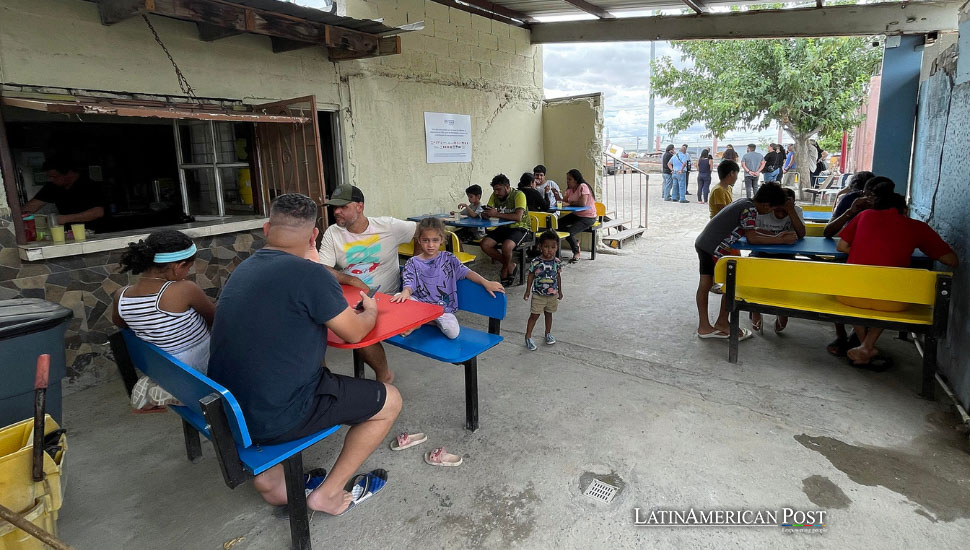Central American Children Suffer Severe Impacts from Climate Change

The severe consequences of climate change in Central America’s Dry Corridor are evident in children’s lives: reduced food availability, frequent flood risks, and parental migration, as reported by World Vision International.
As World Vision International reports, the severe consequences of climate change in Central America’s Dry Corridor are evident in children’s lives: reduced food availability, frequent flood risks, and parental migration.
Thousands of children in the region barely eat one or two meals daily. Over the past five years, the quantity of chicken, rice, bread, potatoes, and vegetables in each meal has dwindled, according to a recent analysis by World Vision International. This NGO consulted over a thousand children and adolescents from 35 El Salvador, Guatemala, Honduras, and Nicaragua municipalities.
Dire Food Shortages and Nutritional Deficits
“We identified through the voices of children that droughts are occurring very frequently in this area,” Jorge Galeano, World Vision’s director for Central America, told EFE. “This has a direct effect on crops,” he confirmed.
Ana, one of the adolescents who participated, shared her experience: “We only eat beans, tortillas, rice once or twice a day, and chicken or meat very rarely.” The diminishing rainfall and torrential downpours exacerbate food insecurity. Thirty-six of every 100 children interviewed reported living in vulnerable areas that endanger their lives. Samuel, a 14-year-old, explained, “Now it rains little, and when it does, the river overflows,” reflecting the findings of the 2023 study.
Floods and landslides frequently destroy homes near river basins, landslide-prone areas, and mountains. Furthermore, the report reveals that 50% of the children, primarily parents, mentioned that a family member had migrated in recent years. “People are leaving their homes because climate change is putting pressure on family livelihoods,” Galeano explained.
Economic difficulties force parents to buy only the essentials, such as food, medicine, and clothing. According to the children, families often share food with those who have less. Climate change has dried up wells and water sources in their communities, making water increasingly scarce. This scarcity directly affects household food availability, reducing quantity and quality.
Many children spend half an hour to an hour fetching water: “We have to carry water from about 500 or 600 meters away because the nearest well dried up,” said Maycol, 11 years old. Economic constraints and environmental challenges combine to create a cycle of poverty and deprivation, with children bearing the brunt of these impacts.
Children’s Environmental Efforts
In response to climate change, most children report “planting trees,” properly disposing trash, and actively participating in “cleanup campaigns.” These activities are carried out individually, within families, and in communities. Children have clear ideas about the roles of the public and private sectors in addressing environmental issues.
They propose offering “environmental education talks” to help those affected and promote reforestation campaigns. World Vision International aims to improve the lives of the 10 million people in the Central American Dry Corridor through research that fosters a shift in mindset about climate change.
“Children have good proposals that need to be heard; this study is a foundation that allows us to make these voices known,” Galeano concluded. “Climate change is something that is affecting all of us.”
The children of the Central American Dry Corridor are not just passive victims of climate change but actively seeking solutions and making a difference in their communities. Their efforts to plant trees, manage waste, and participate in cleanup drives demonstrate a proactive approach to mitigating environmental damage. Though small on a global scale, these actions are significant in their immediate environments and provide a model of community resilience and environmental stewardship.
The situation in the Dry Corridor underscores the urgent need for comprehensive strategies to address climate change and its impacts on vulnerable populations. Governments, NGOs, and international bodies must collaborate to implement sustainable practices and provide support to communities facing the brunt of environmental changes.
Broader Implications for Latin America
The plight of children in the Dry Corridor reflects broader trends across Latin America, where climate change is exacerbating existing social and economic inequalities. Countries across the region are witnessing shifts in weather patterns, increased frequency of natural disasters, and significant environmental degradation. These changes disproportionately affect the poorest and most vulnerable populations with the least capacity to adapt.
In response, regional cooperation and international aid are essential. Latin American countries must collaborate to share resources, knowledge, and strategies to build resilience against climate change. Global organizations can play a crucial role by providing funding, technical assistance, and policy guidance to support these efforts.
The children’s stories from the Dry Corridor highlight the human face of climate change and the urgent need for action. They remind us that the impacts of environmental degradation are not just statistics but real-life struggles that affect society’s most innocent and vulnerable members. We can help build a more sustainable and equitable future for all by listening to their voices and supporting their initiatives.
The devastating effects of climate change in Central America’s Dry Corridor, as detailed in the World Vision International report, reveal the harsh realities faced by children in the region. With reduced food availability, increased flood risks, and widespread parental migration, environmental changes deeply affect young lives. However, their proactive efforts in ecological conservation provide a beacon of hope and resilience.
Also read: Central America Faces Devastating Floods and Landslides from Relentless Rains
As the world grapples with the multifaceted challenges of climate change, the experiences and actions of these children underscore the urgent need for comprehensive and collaborative solutions. By addressing the immediate and long-term impacts of climate change, we can support the communities of the Dry Corridor and beyond, ensuring a sustainable future for the next generation.




